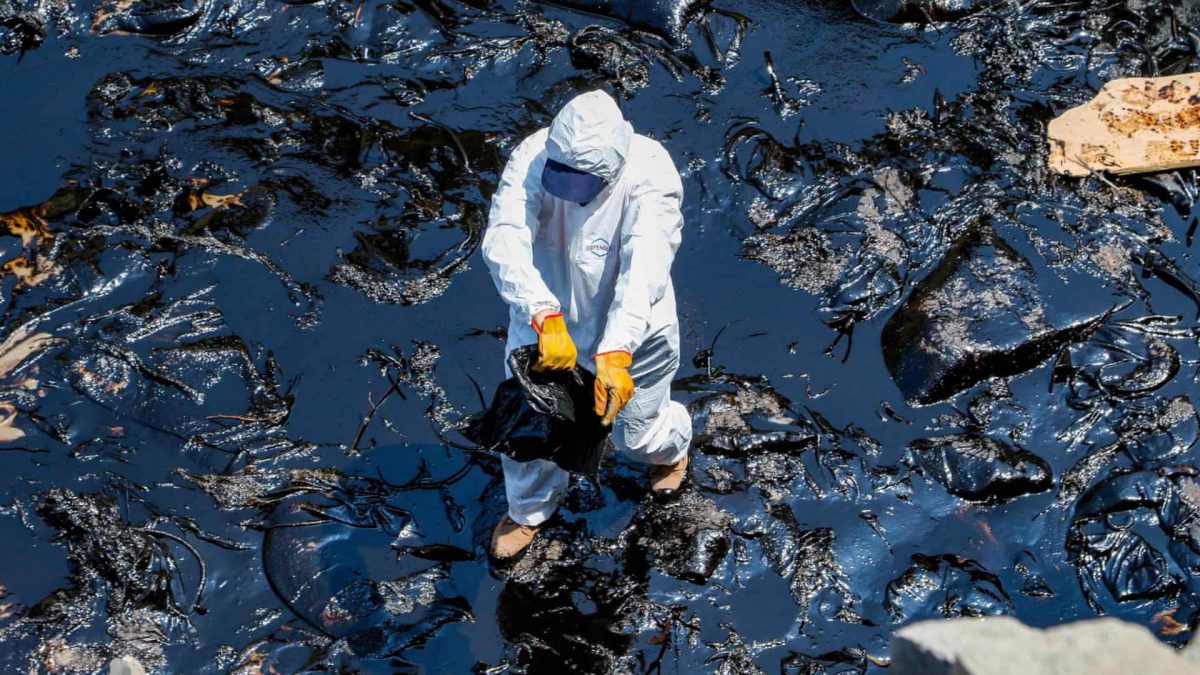With 2022 promising to be a record-breaking year for oil exploration and recovery in South America, it would be an act of unfathomable recklessness to ignore the ever-present danger of the environmental risks that attend what, for the hemisphere, are potentially breakthrough economic pursuits that could alter overall economic and developmental fortunes for the future.
Simultaneously, the clear and present danger of sudden, unannounced devastating environmental mishaps that could, at a moment’s notice, transform dreams into nightmares, are manifested in South America’s second significant oil spill in two weeks.
On February 8, the oil transport company Oleoducto de Crudos Pesados (OCP) reported that an oil spill caused by a ruptured pipeline in Ecuador’s Amazon region, was leaking almost 6,300 barrels of oil into one of the country’s environmental reserves. The occurrence had been preceded, two weeks earlier, by a January 15 oil spill at one of the La Pampilla refineries off the coast of Ventanilla in the region of Lima, Peru. This episode was reportedly caused by shock waves from an undersea volcanic eruption near Tonga in the South Pacific Ocean.
In both instances the consequences were environmentally distressing and physically disruptive. They have, as well, served to amplify the ongoing safety and environmental warnings that have long resonated across the international oil industry.
This time, the focus is on South America, the home of one of the largest concentrations of oil-producing or prospective oil-producing countries anywhere in the world, and home to millions of people who are altogether unaccustomed to the damage and economic and emotional shock that comes with oil-related environmental disasters.
The double mishap has, significantly, occurred at a time when the attention of the global oil industry has decidedly shifted to South America where this year is scheduled to see high-profile oil search and oil-recovery activities.
Significant oil spill-related occurrences tend to conform to a pattern that begins with the actual occurrence and afterwards the often swift unfolding of the scale of the tragedy, the raised anguished voices of the victims and what, all too frequently, are the visible manifestations of the tragedy. After that, frequently, comes the social and political theatre manifested in the outcries of the victims and the environmental lobbyists, the ‘who’s responsible’ exchanges between the host governments and the oil companies and the counting of the environmental costs as well as those connected with actual economic recovery and lending attention to physically dislocated people.
As in the various other instances preceding these recent ones, there is also the matter of the counting of the physical cost. In the instance of Ecuador, approximately 21,000 square meters of the country’s Cayambe-Coca Nature Reserve has been affected by the leak while significant volumes of crude reportedly flowed into the Coca River, one of the largest in Ecuador’s part of the Amazon which serves as a water source for many communities, including indigenous ones. The outcries of the victims in Ecuador have already been resonating. “We demand to know… what will be the process of delivering water and food to the communities. It’s clear that the river water cannot be used or drunk,” the National Confederation of Indigenous Nationalities of the Ecuadoran Amazon has said.
There is every chance that the mishaps in Peru and Ecuador will shine an even more focussed light on other parts of the region, like Guyana and Suriname, that are likely to see oil and gas ‘action’ this year. Guyana’s ongoing and up until now untroubled oil recovery pursuits, driven by the US company ExxonMobil continue to be ‘shadowed’ by a modest local environmental lobby and by a larger international one that is likely to become more ‘attentive’ the more the global oil industry continues to talk up the growth potential of the country’s oil and gas sector. That apart, Brazil has already signalled its intention to maximise its earnings from its oil and gas sector this year whilst Suriname, whose own significant oil and gas prospects have, up until now, remained ‘shadowed’ by Guyana’s jump ahead, will presumably be seeking to hasten the pace of its own ‘coming out party’.
Venezuela, too, long stymied by US sanctions are specifically targeting the country’s oil recovery though it is expected that the authorities there will be seeking to ramp up production this year.
There can be no question, therefore, that what seems set to be a busy year for the oil and gas recovery industry in South America is also likely to be a testing one for oil companies in terms of their mindfulness of ensuring strict safety regimes and environmental protocols. While the environmental lobby in parts of the region, notably Guyana, is relatively weak, one expects that given the fact that the region as a whole has become the focus of international environmental attention, increased attention will be paid to the country’s environmental bona fides in the period ahead.
Significantly, in the instance of Guyana, the country’s week-long International Energy Conference and Expo scheduled to begin here on Tuesday and which is expected to attract significant attention both inside and outside the oil and gas industry also provides an opportunity to contemplate the wider issues associated with the oil and gas industry including key safety and environmental considerations.






